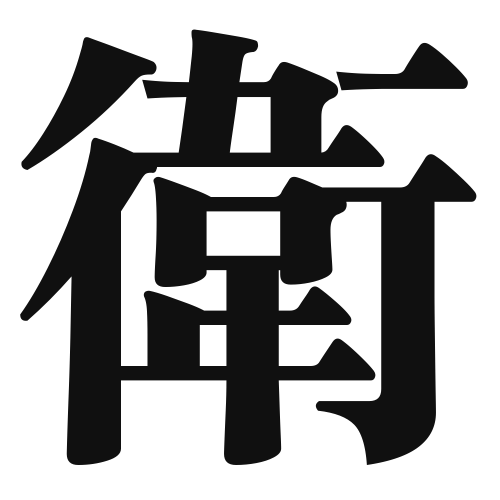1. Overview of Meaning
The kanji 衛 (pronounced “ei” or “e”) primarily means “to protect” or “to guard.” It is often associated with concepts of defense and safety.
2. Formation and Radical
Formation of the Kanji: The kanji 衛 is a phonetic-ideographic character (形声文字) that combines the meaning of protection with a phonetic component. The left part of the character represents a person or a guard, while the right part suggests a sound or pronunciation.
Radical: The radical for 衛 is 宀 (roof), which often relates to buildings or shelter, emphasizing the idea of protection.
3. Examples of Usage
Common Words and Phrases: Some frequently used words that include 衛 are:
- 衛生 (eisei) – hygiene
- 防衛 (bōei) – defense
- 警衛 (keiei) – security guard
Example Sentences in Daily Conversation:
- この地域の衛生状態は良好です。
(The hygiene condition in this area is good.) - 彼は国を防衛するために戦っています。
(He is fighting to defend the country.)
4. Synonyms and Antonyms
Similar Kanji: A similar kanji is 守 (shu), which also means “to protect” but is more focused on the act of guarding or keeping safe.
Opposite Kanji: An antonym is 攻 (kō), which means “to attack,” representing the opposite action of defense.
5. Cultural and Historical Background
Relation to Japanese Culture: The concept of 衛 is deeply embedded in Japanese culture, particularly in the context of community safety and personal hygiene, which are highly valued.
Proverbs and Idioms: One common saying is 衛生第一 (eisei daiichi), meaning “hygiene first,” highlighting the importance of cleanliness in daily life.
